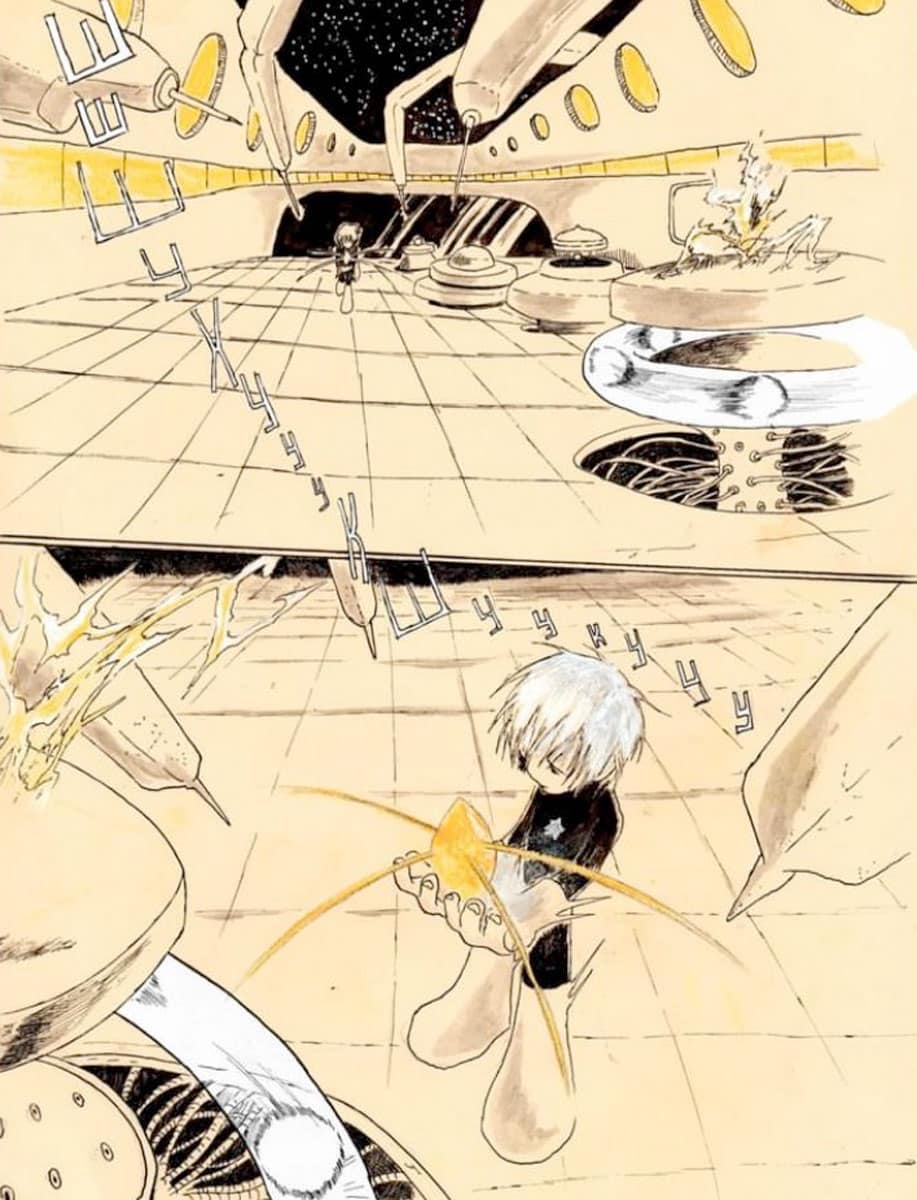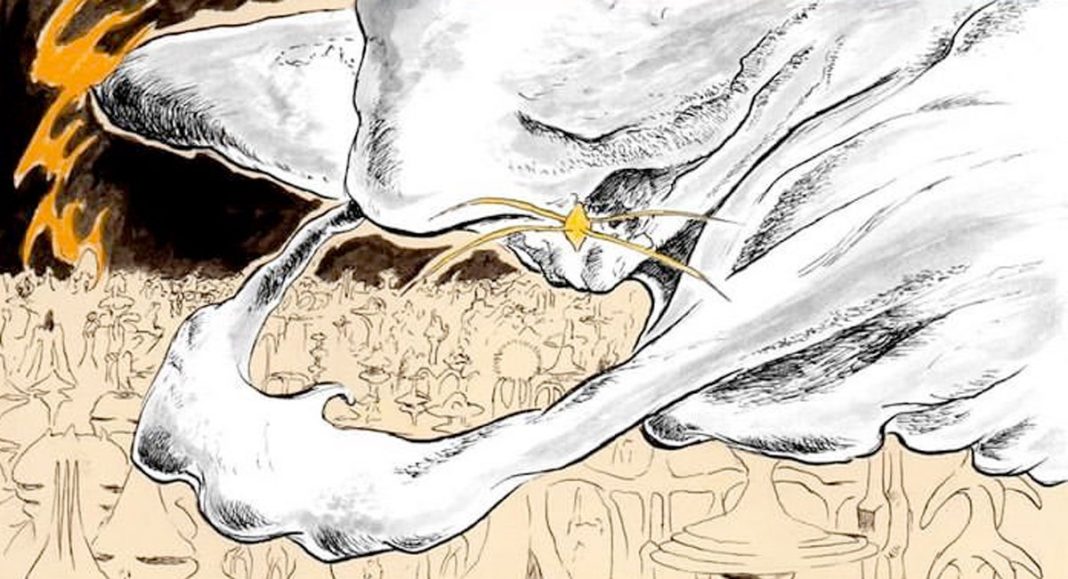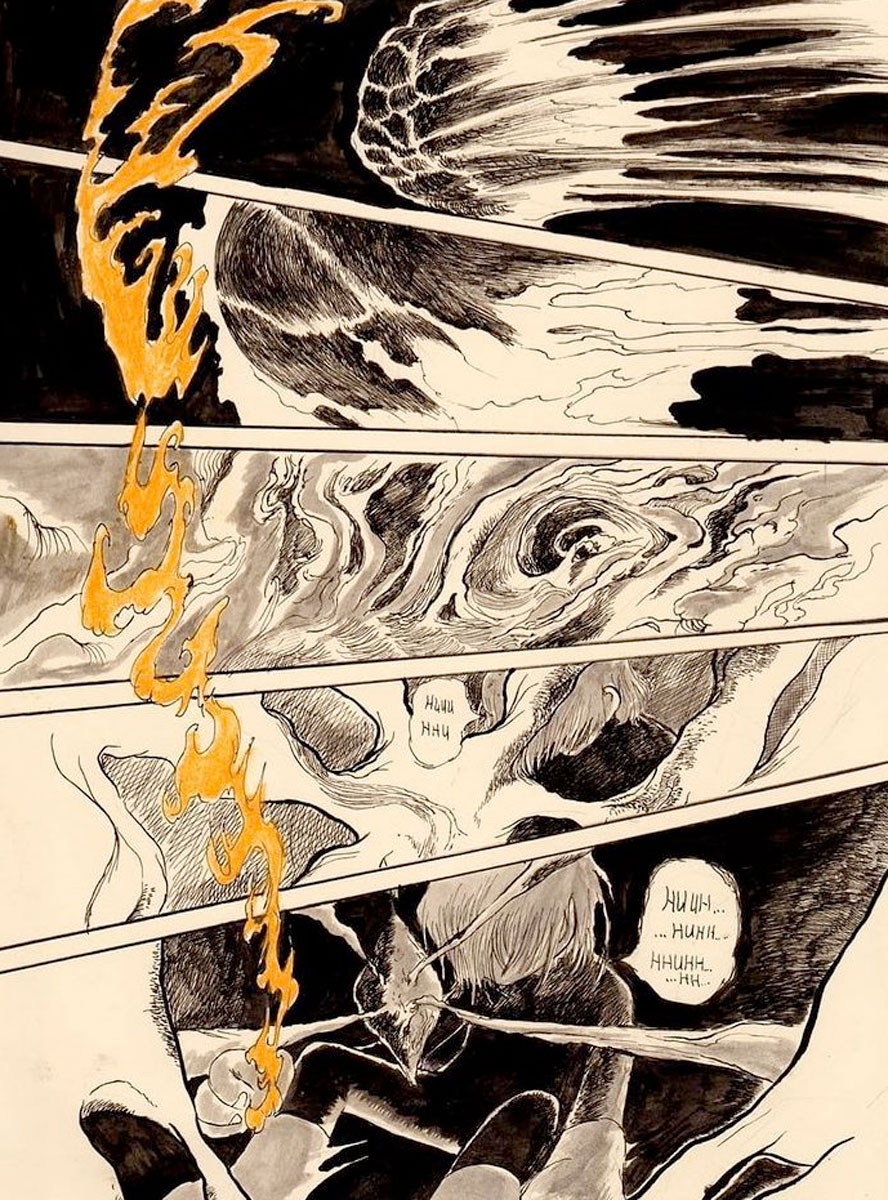
Written and illustrated by Rafael Zaiats
Published by Strangers Publishing
The reader of Makinaphobe is charged with a task. Inside a forgotten city, strange creatures and other dangers shake and roar like an oncoming bus. We must interpret a dream. The reverie is Rafael Zaiats‘ Makinaphobe, a comic in code, symbols with secret meaning for us to interpret, mysteries we bear witness to. It’s the dream of the autonomic nervous system, a story driven by the shock response impulses of violence and escape. Makinaphobe is how the childlike fighter became the defender of the metropolis, and how it was then destroyed.
It is, in a word, weird. The fire guy with the boots. The girl who has giant griffin hands and a spider body. The otherwise deserted throughway inside the night dome where the handful of characters reside still has trains running at all hours. There is an internal logic working beneath surface. Behind the practically endless action sequence. But Zaiats doesn’t spend time spelling it out for you, Makinaphobe is busy smashing shit. The art is expressive, outlandish, sometimes cluttered to the point of obscurity. Everything I love about Sam Kieth’s work, density and intensity and liquid flexibility. Applied like Zuo Ma’s Night Bus dream logic. The giant being that would crush the city. The massive magic window they went through, and the blizzard that came when he followed.
The art is packed with action, sound effects that look like Mouse/Grateful Dead album lettering, motion lines, impact debris, fractal goo, and other esoteric scribbled visual indications of violence- it can be as opaque as the plot. Compelling nonetheless. The art bubbles and fizzes as transformations occur, destruction fragments what was spectral and ephemeral to begin with. Swirling, melting pencils are colored with a citrus wash, pulp left in. In the end, even if the explanations are kept hidden, what you do see is fucking awesome looking.

So I don’t totally get what’s happening, but I don’t care. I’m cool with following the experience. Things are colliding: Zaiats’ communication of motion and impact is clear, but it’s unclear how and what. It isn’t a failure to get the idea across so much as intentionally overwhelming. There is reason that fuels Makinaphobe. Magic rites and matter transformations following a dream logic that has meaningfully delineated steps. Sometimes uninterpretable but always the sense that you are being spoken to, in a language you don’t understand.
Makinaphobe is Gormenghast set in the amygdala. While the characters confidently move about the ancient city in darkness, the reader is exploring the unknown. There’s traffic everywhere, automobiles by the dozen as well as the rail system, but there are only a handful of friendly faces, and they all disappear when the monster fight takes the story’s reins. Dream logic. Really: Makinaphobe is a fever dream that came from the cartoonist getting hit by a car when they were younger. Not that placing the story in that context is some key to understanding it. I think Zaiats’ disclosure of Makinaphobe’s source benefits the reader’s relationship to the story by bringing a kind of legitimacy instead of clarity. Makinaphobe seems surreal, psychedelic, chimeric, beyond reason, experience outside of meaning. But it has a cause, it is an effect. A result that owes no one’s expectations.
Which makes this graphic novel filmic in a way I don’t normally think about in relation to comics. Movies are beholden to time in their storytelling, which makes Makinaphobe’s kind of dream logic really work, forcing us to keep pace with the chain of cause-and-effect even if we don’t immediately parse its reasoning. Comics obviously you can linger anywhere you wish, make the narrative flow at the pace of your emotional connection. Yet when I try to stop and soak up the action or the weirdness, Makinaphobe’s pull keeps me submerged and swimming.
Makinaphobe is available from Strangers Publishing and wherever finer comics and books are sold.










